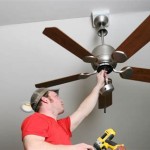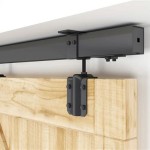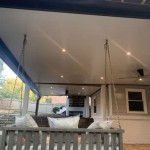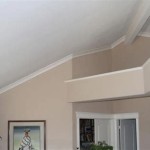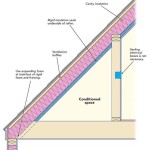What Is The Quietest Ceiling Fan On The Market?
The pursuit of a quiet and comfortable living environment often leads homeowners and occupants to consider the noise levels generated by essential appliances. Ceiling fans, primarily designed for airflow and temperature regulation, can inadvertently contribute to unwanted ambient sounds. Identifying the quietest ceiling fan on the market requires understanding the factors that contribute to fan noise and evaluating specific models known for their silent operation.
Several factors contribute to the noise produced by a ceiling fan. These include the motor quality and design, blade balance and material, the overall construction and stability of the fan unit, and even the installation process. A high-quality motor will operate more smoothly and with less vibration than a cheaper, less efficient model. Well-balanced blades made from appropriate materials will minimize air turbulence and reduce the potential for wobbling, a significant source of noise. Sturdy construction ensures that the fan housing and mounting hardware do not amplify vibrations. Finally, proper installation is crucial to prevent rattling or other noises caused by loose components.
Determining the absolute "quietest" ceiling fan isn't straightforward, as noise perception is subjective and often influenced by individual sensitivities. However, certain brands and models consistently receive high ratings for quiet operation based on user reviews and independent testing. These fans often employ advanced technologies and design features aimed at minimizing noise production. Factors considered in professional reviews often include decibel (dB) ratings at various speed settings, build quality, and the presence of noise-reducing features like DC motors or specially designed blades.
Understanding the Impact of Motor Type on Noise Levels
The type of motor used in a ceiling fan is a primary determinant of its noise level. Traditionally, ceiling fans employed AC (Alternating Current) motors. While generally reliable, AC motors are known to produce a noticeable hum, especially at higher speeds. This hum is a result of the electrical current oscillating back and forth, creating vibrations within the motor itself.
In recent years, DC (Direct Current) motors have gained popularity in ceiling fans due to their significantly quieter operation. DC motors use a constant flow of electrical current, resulting in smoother rotation and reduced vibration. This translates to a substantially lower noise level compared to AC motors. Many manufacturers now prominently feature DC motors as a selling point, emphasizing their quiet performance and energy efficiency. In addition to quieter operation, DC motors are often more energy-efficient than their AC counterparts, leading to lower electricity bills over the lifespan of the fan. They also frequently offer a wider range of speed settings, allowing for finer control over airflow and noise levels.
The difference in noise levels between AC and DC motor fans can be substantial. While an AC motor fan might produce a noticeable hum that could be distracting in quiet environments such as bedrooms or study areas, a DC motor fan can operate virtually silently, providing cooling without adding unwanted noise to the room.
The Role of Blade Design and Material in Noise Reduction
Beyond the motor, the design and material composition of the fan blades play a critical role in determining the overall noise level. The primary source of noise from the blades is the sound of air rushing across their surface and the turbulence created as they move. Aerodynamic blade designs are engineered to minimize this turbulence, thereby reducing noise. This often involves carefully considering the blade's shape, pitch (the angle at which the blade is set), and surface texture.
Blades with a steeper pitch generally move more air but also create more noise. Manufacturers often strike a balance between airflow efficiency and noise reduction when designing blade pitch. Smoother blade surfaces can also reduce air turbulence and noise. Some manufacturers use specialized coatings or surface treatments to further minimize noise production.
The material used for the fan blades can also affect noise levels. Blades made from lightweight materials like plastic or engineered wood tend to produce less noise than heavier blades made from metal. This is because lighter blades require less force to rotate, reducing the strain on the motor and minimizing vibrations. However, the choice of blade material must also consider durability and aesthetic appeal. Well-constructed blades made from durable materials are essential for long-term performance and preventing wobbling, which can further increase noise.
Installation Quality, Balance and Maintenance Impacts Noise.
Even the quietest ceiling fan will generate unwanted noise if it is not installed correctly. Proper installation is essential for ensuring that the fan operates smoothly and silently. This includes securely mounting the fan to the ceiling junction box, ensuring that all screws and bolts are tightened properly, and verifying that the fan blades are balanced. Loose screws or a wobbly mounting bracket can cause rattling and vibrations, significantly increasing the noise level.
Balancing fan blades is a crucial step in the installation process. Even slight imbalances can cause the fan to wobble, generating noise and potentially shortening the lifespan of the motor. Many ceiling fans come with balancing kits that include small weights that can be attached to the blades to correct any imbalances. Carefully following the instructions provided with the balancing kit can significantly reduce noise caused by blade wobble.
Regular maintenance is also essential for keeping a ceiling fan operating quietly. Dust accumulation on the blades and motor can cause imbalances and increase friction, leading to increased noise levels. Regularly cleaning the blades with a damp cloth and vacuuming the motor housing can help prevent these issues. Lubricating the motor bearings periodically can also reduce friction and noise, especially in older fans. Following the manufacturer's recommendations for maintenance will help ensure that the fan continues to operate quietly and efficiently for years to come.
Choosing the quietest ceiling fan involves considering a combination of factors, including motor type, blade design, construction quality, and installation practices. While identifying the absolute "quietest" model is subjective, paying attention to these factors and reading reviews from other users can significantly improve the chances of selecting a fan that provides effective cooling without adding unwanted noise to living spaces.

Quiet Ceiling Fan With Led Light And Remote 32 Inch Large Air Volume Reversible Dc Motor White For Kitchen Bedroom Dining Room Patio Com

Ocioc 32 Inch Quiet Ceiling Fans With Lights And Remote Control Large Air Volume Reversible Dc Motor For Kitchen Bedroom Dining Room Patio Black Com

Aoibox 46 White Ultra Quiet Ceiling Fan With Led Light And Remote Control 6 Sd Dc Motor Energy Efficient W 3 Color Snmx2840 The Home Depot

Oaning 52 In Integrated Led Indoor Modern Silver Quiet Energy Saving 5 Reversible Blades Ceiling Fan With Remote Hcx189 Us The Home Depot

Quiet Ceiling Fans Hunter Fan

Sofucor 52 Modern Ceiling Fan Without Light Remote Control Noiseless Reverse Airflow For Farmhouse Patio Living Room Com

Aoibox 46 White Ultra Quiet Ceiling Fan With Led Light And Remote Control 6 Sd Dc Motor Energy Efficient W 3 Color Snmx2840 The Home Depot

Quiet Ceiling Fans Hunter Fan

36 Ceiling Fan With Light And Remote Copper Low Profile Quiet

Sofucor 60 Modern Farmhouse Ceiling Fan With Remote Control No Lights 3 Blades Reverse Airflow Nickel Com
Related Posts


